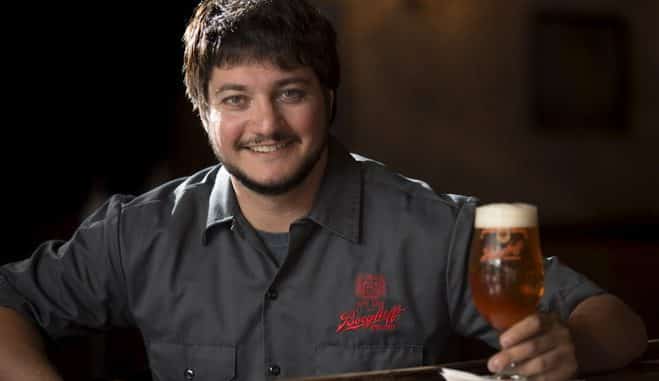
When it comes to beer, the almost 27-year-old owner of the 127-year-old Berghoff Brewery believes that old trumps new any day.
“No one wants your dad’s beer, (but) having grandpa’s beer is cool,” said Ben Minkoff, whose family owns General Beverage Distributors and acquired the Berghoff brand in 1994. “We had this history and legacy that people know. We want to bring back that nostalgia.”
The problem with Minkoff’s vision when he took control in 2011 was that the “nostalgia” of the Berghoff name had been tarnished as the brand changed hands and recipes were altered over the years.
So some sprucing up was in order, including restoring its image as a premium brand.
“Before (when Berghoff six-packs were selling for about $6), we were getting a completely different drinker than we have now,” Minkoff said. “They know the name, but they have to figure it out again because we changed the liquid and the package.”
And the price. Now, customers pay $2 to $3 more for a Berghoff six-pack.
One year after Berghoff’s revival, which began with revamping labeling with color and detail and experimenting with flavors, it’s working. The brand, brewed under an “alternating proprietorship” arrangement at a brewery in Stevens Point, will expand distribution from its four core states — Wisconsin, Michigan, Indiana and Illinois — to include part of Florida and Ohio next year.
In Florida, a 20,000-square-foot Berghoff German Beer Hall with a 5,000-square-foot outdoor beer garden is set to open early next year, according to Scott Benjamin of Artegon Marketplace, a new shopping center in Orlando that opens in mid-October.
According to Minkoff, Berghoff is also going to distribute in Ohio sometime next year through Cavalier Distributing, a distributorship in Ohio, Indiana and Florida.
“We’ve really just started reaching a whole new clientele. It’s been one year and we’ve seen sales increase, as well as in the image and perception,” Minkoff said. “We just have to continue coming out with new experimental beers with new drinkers as well as getting people to try the beer again.”
The beer gurus behind Berghoff’s expansion are John Hannafan and Randy Mosher.
“People legitimately want variety, and whether or not they can point to what it is, they reward quality,” said Mosher, an established author on beer and the creator of the brewery’s new labels. “How to do that and what it means, exactly, is a bit of a shifting target, but that is what keeps business interesting, isn’t it?”
There are almost 370 craft breweries in Berghoff’s core states, according to the Brewers Association. With so much competition, the old brewery has had to experiment. While it provides traditional German brews, it also offers eccentric ones like Germaniac Extra Pale Ale, which Hannafan describes as a pale ale mash-up with molasses, honey and oats.
Hannafan, director of education at the Siebel Institute of Technology and World Brewing Academy, is Minkoff’s right-hand recipe man who has studied the craft extensively in Germany. Recipes for Berghoff’s core beers, including Germaniac and Straight-Up Hefeweizen, are based on those Hannafan studied in the country.
“There is a New World twist on all of these beers, just as the German immigrants did, blending available North American ingredients with the less available German malts and hops,” Hannafan said in an email. “I believe they would have approved of what we have accomplished.”
Just last month, the trio released an extremely limited amount, only 1,000 cases, of the first beer in its Radler series: the soda-free Granola Shambler, which is instead made with fruit purée. Just this week the brewery finalized the recipe for its newest product, a hard root beer to be released by January. As soon as the end of this month, a new hops lager named Hopfen Stomper will also be available.
“It’s become our brand to look at the history and brew off that and grow,” Minkoff said. “If we continue to do this, we should be just fine.”